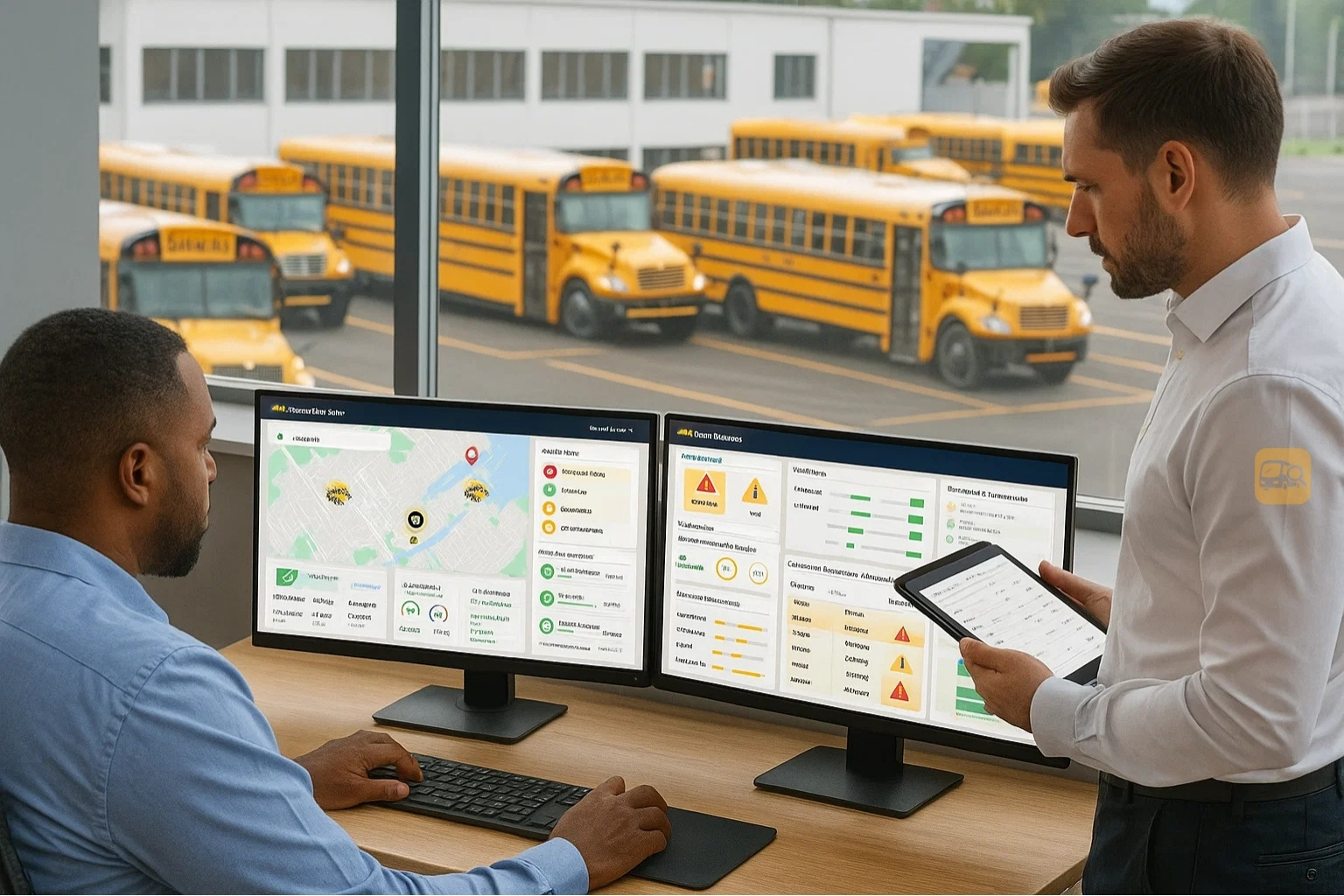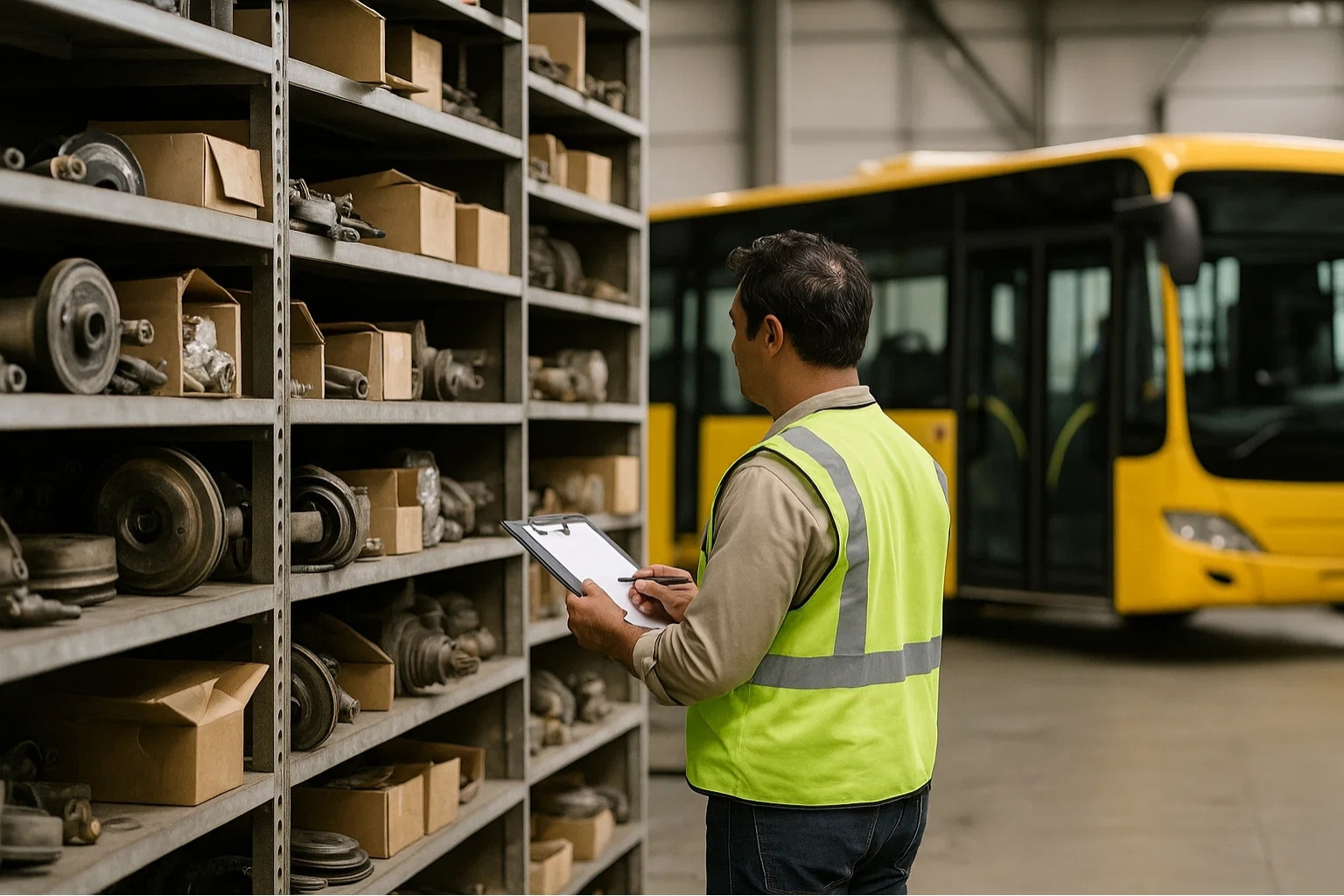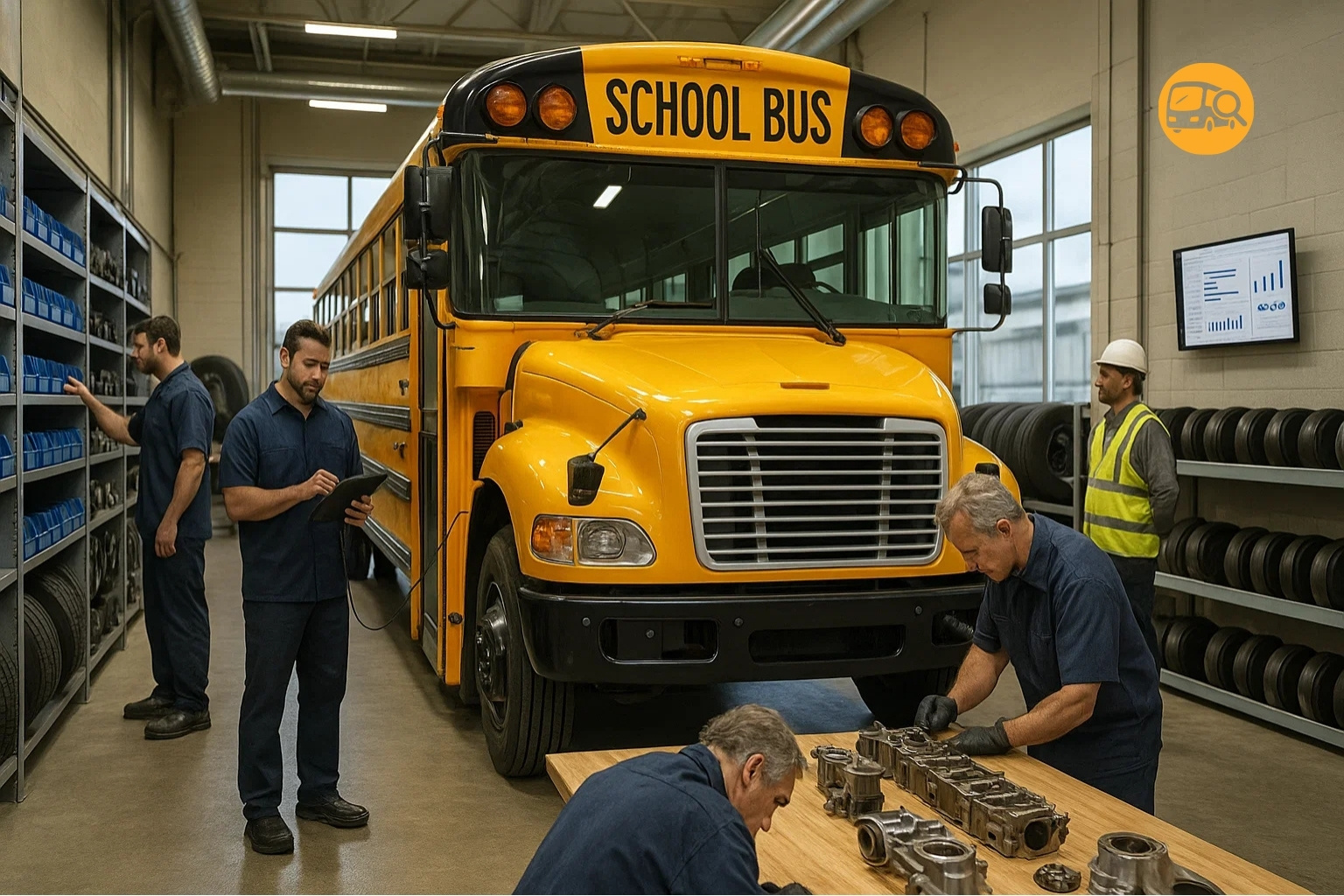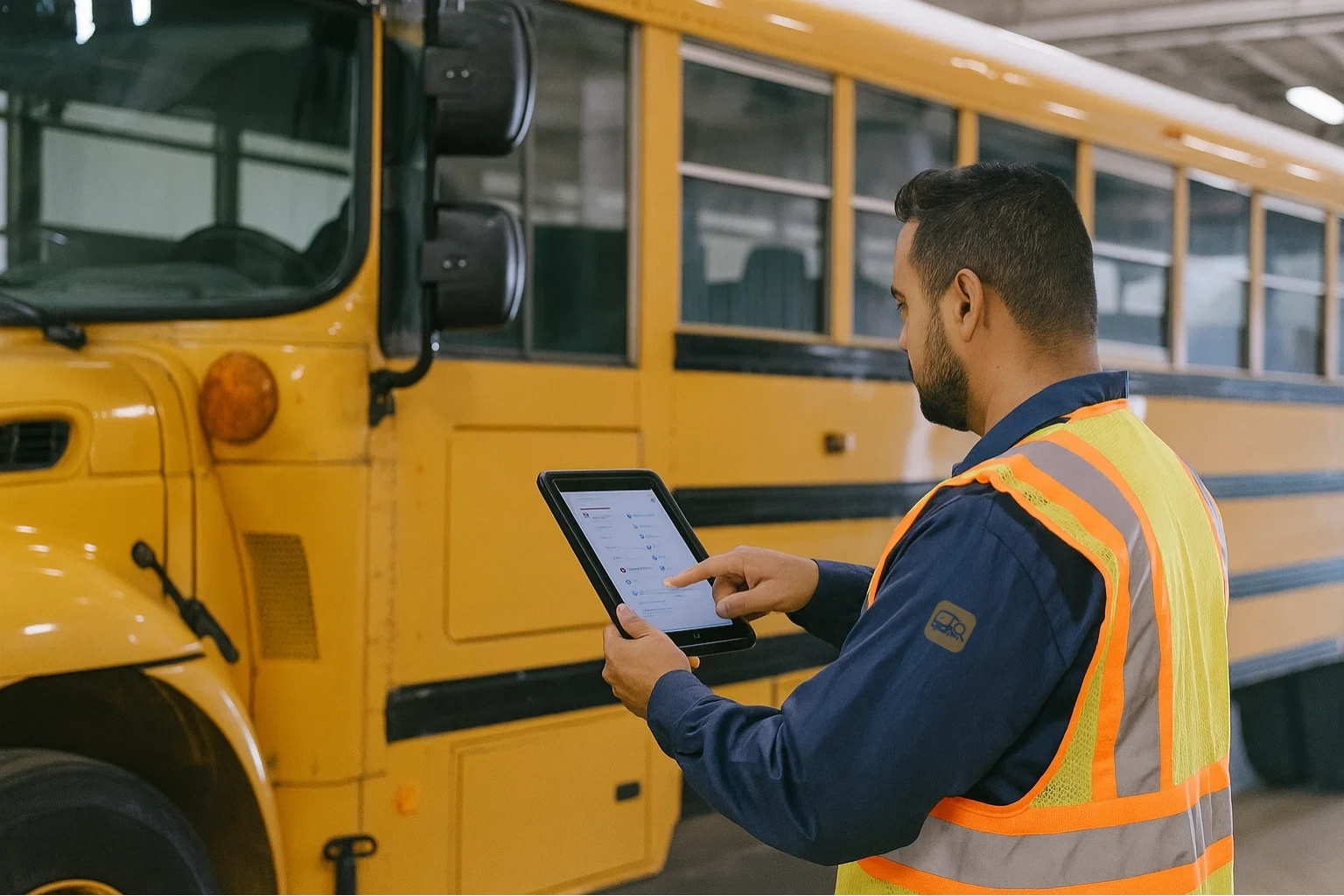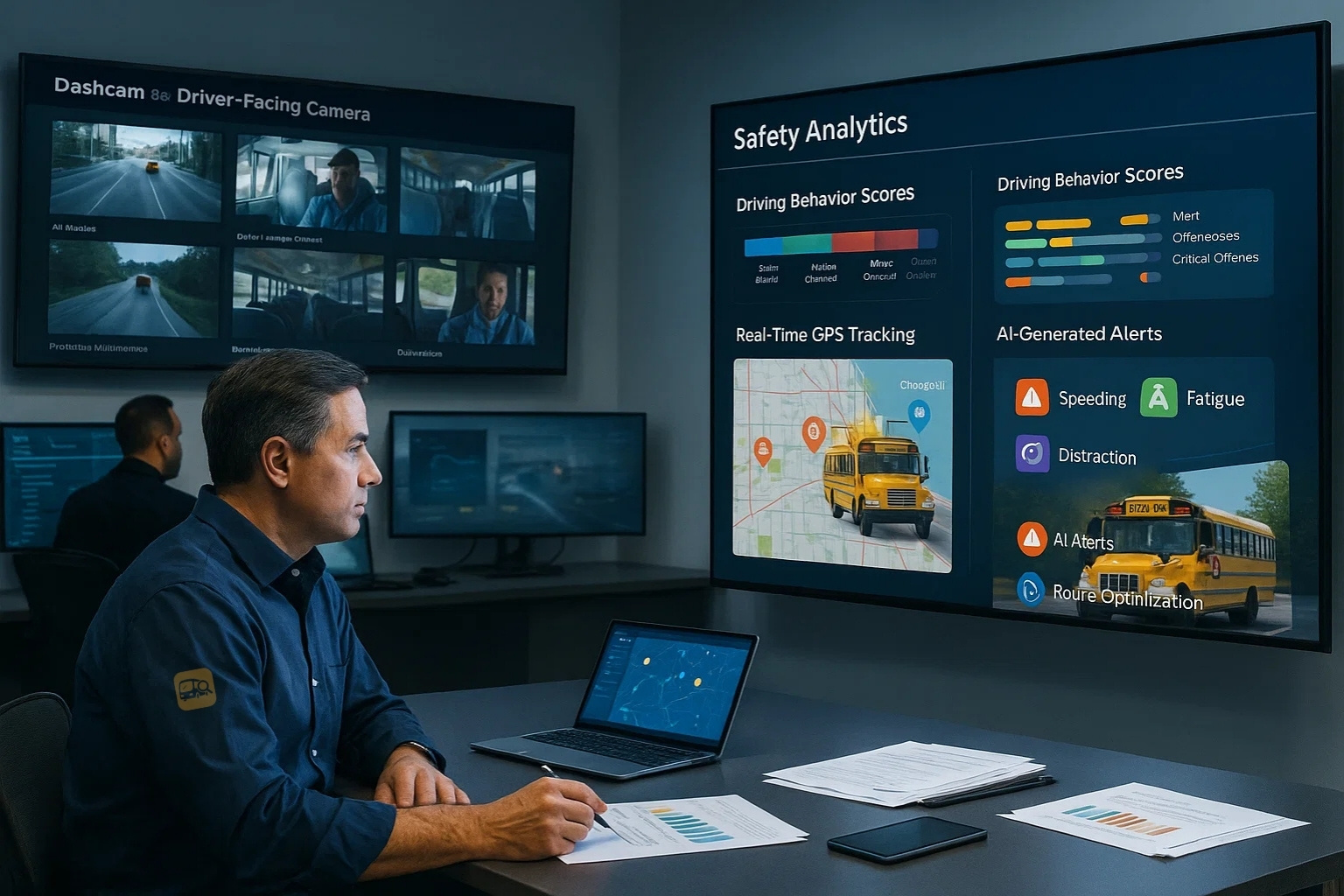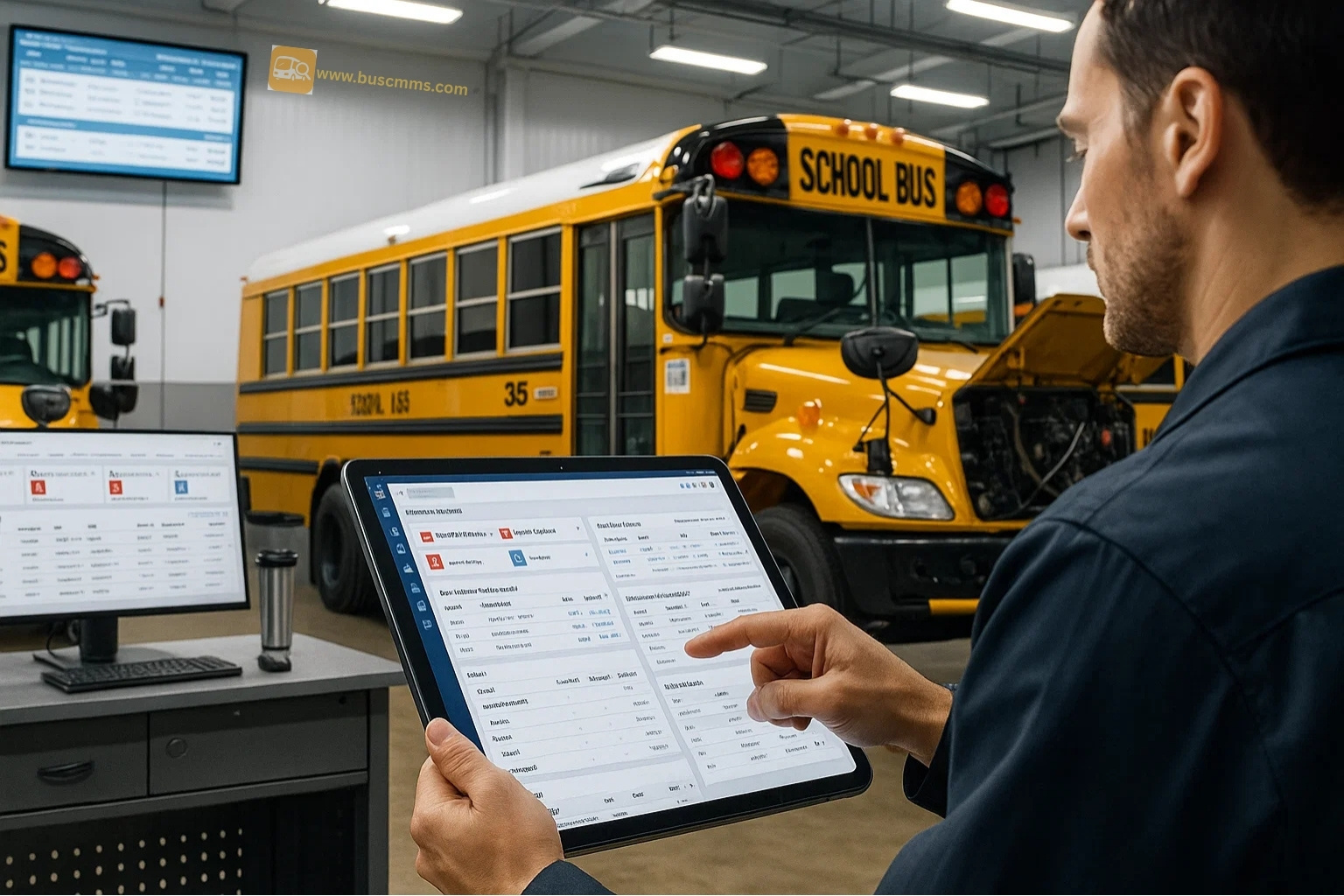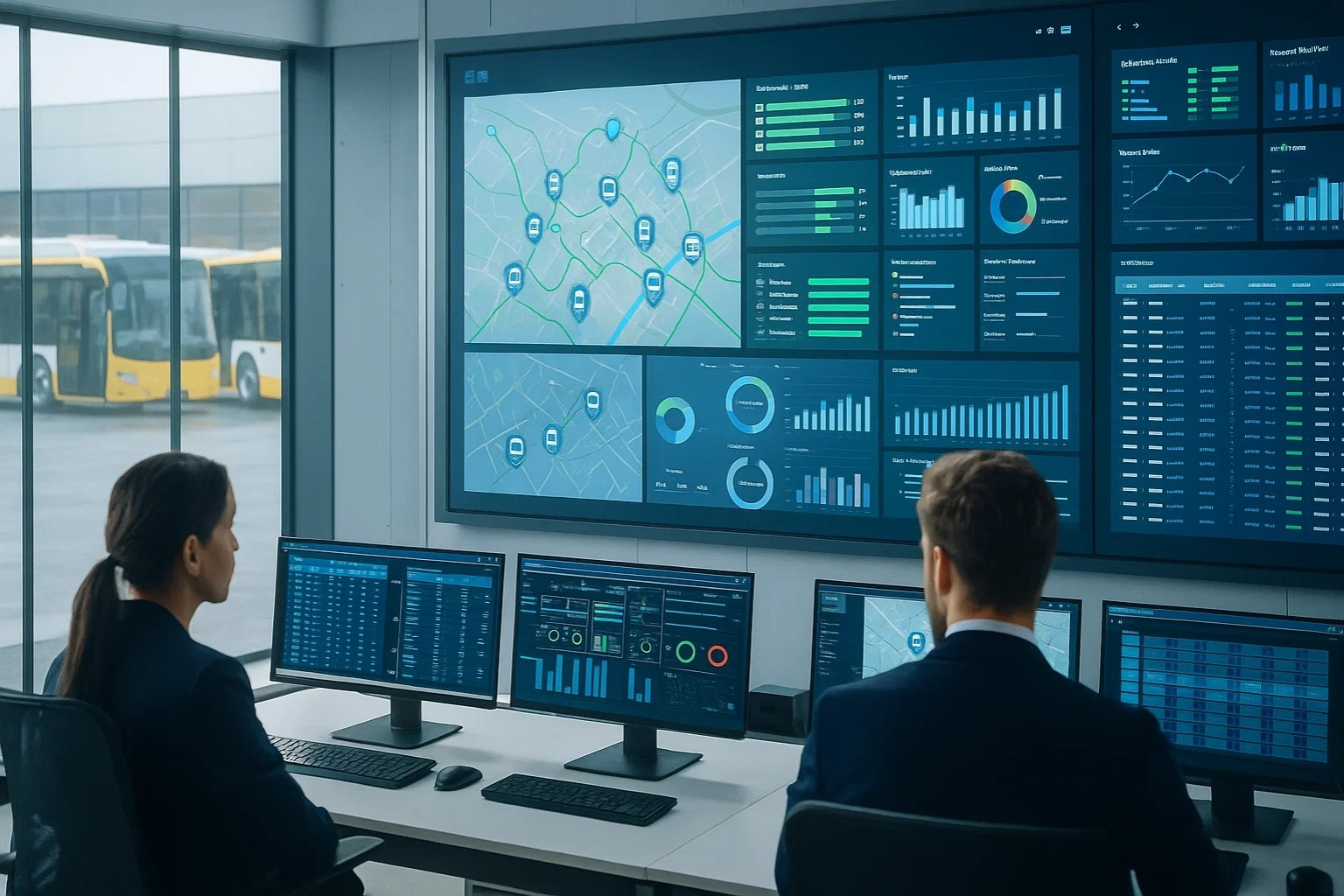Every day, thousands of school buses across America carry our most precious cargo - our children. For manufacturing professionals in the transportation sector, ensuring these vehicles operate at peak safety and efficiency isn't just good business; it's a moral imperative. Modern school bus fleet management software has emerged as the game-changing solution that transforms how we maintain, monitor, and manage these critical assets.
If you're managing a fleet of school buses or manufacturing components for the education transportation sector, you understand the unique challenges: stringent safety regulations, budget constraints, aging vehicles, and the absolute necessity of zero-tolerance for breakdowns. The right CMMS (Computerized Maintenance Management System) doesn't just address these challenges - it revolutionizes how your entire operation functions, from preventive maintenance scheduling to real-time GPS tracking and comprehensive fleet compliance management.
In today's data-driven world, relying on paper logs and reactive maintenance is like navigating with a paper map when GPS exists. School bus CMMS platforms integrate advanced AI fleet tools, automated maintenance scheduling, and comprehensive safety protocols into one seamless system. The result? Safer students, happier parents, reduced costs, and a fleet that runs like clockwork.
Transforming Maintenance from Reactive to Predictive
Traditional fleet maintenance operates on a simple but flawed principle: fix it when it breaks. For school buses carrying dozens of children, this approach is both dangerous and expensive. Modern fleet software revolutionizes this paradigm by implementing predictive maintenance protocols that identify potential issues before they become problems.
Advanced CMMS systems continuously monitor critical vehicle parameters - engine performance, brake wear, tire pressure, and hundreds of other data points. When the system detects anomalies that could indicate future failures, it automatically generates work orders and schedules maintenance during non-operational hours. This proactive approach reduces unexpected breakdowns by up to 75% while extending vehicle lifespan by 20-30%.
For manufacturing professionals, this means developing components that integrate seamlessly with these monitoring systems. Smart sensors, IoT-enabled parts, and diagnostic-ready systems are no longer optional extras - they're essential features that fleet managers demand. The maintenance software becomes the central nervous system of the fleet, coordinating everything from oil changes to major overhauls with precision timing that minimizes downtime and maximizes student safety.
Real-Time Tracking and Route Optimization
Gone are the days when parents anxiously waited at bus stops, wondering if their child's bus was running late. Modern school bus tracking systems provide real-time GPS location data that benefits everyone in the transportation ecosystem. Fleet managers gain unprecedented visibility into their operations, while parents receive automated notifications about bus arrivals and delays.
Route optimization algorithms analyze traffic patterns, weather conditions, and student pickup locations to create the most efficient routes possible. These AI fleet tools can reduce fuel consumption by 15-20% while cutting average route times by 10-15 minutes. For a fleet of 100 buses, this translates to savings of over $200,000 annually in fuel costs alone.
The integration of GPS systems with fleet management software creates a comprehensive operational picture. Managers can monitor driver behavior, ensure adherence to designated routes, and respond instantly to emergencies or route deviations. This level of oversight isn't about micromanagement - it's about ensuring every child gets to school safely and on time, every single day.
Ensuring Compliance and Driver Safety
The regulatory landscape for school transportation is complex and constantly evolving. Fleet compliance isn't just about avoiding fines - it's about maintaining the highest safety standards for student transportation. Modern CMMS systems automate compliance tracking, ensuring every vehicle meets federal and state requirements without the administrative burden of manual record-keeping.
Driver safety features in contemporary fleet software go beyond basic monitoring. These systems track driver behavior patterns, identifying risky behaviors like hard braking, rapid acceleration, or excessive idling. The software provides real-time feedback to drivers and generates comprehensive reports for fleet managers. This data-driven approach to driver safety has been shown to reduce accidents by up to 40% while improving fuel efficiency through better driving habits.
Integration and Automation: The Future of Fleet Management
The true power of modern school bus fleet management software lies in its ability to integrate disparate systems into a unified platform. Fleet automation connects maintenance scheduling with inventory management, links driver schedules with vehicle assignments, and synchronizes route planning with real-time traffic data. This holistic approach eliminates data silos and creates operational efficiencies that were previously impossible.
For US manufacturing professionals, this integration trend presents significant opportunities. Components that can communicate with fleet management systems, parts that self-report wear levels, and vehicles designed with data collection in mind are becoming industry standards. The manufacturers who embrace this connected ecosystem will find themselves at the forefront of the education transportation revolution.
Ready to revolutionize your school bus fleet operations? Discover how our comprehensive CMMS platform can transform your maintenance processes, enhance student safety, and deliver measurable ROI. Join thousands of fleet managers who've already made the switch to smarter, safer fleet management.
Getting StartedBook a Demo
Measuring Success: KPIs That Matter
Implementing fleet management software is an investment, and like any investment, it needs to deliver measurable returns. Modern CMMS platforms provide comprehensive analytics dashboards that track the KPIs that matter most to school transportation operations. From cost-per-mile metrics to on-time performance rates, these systems transform raw data into actionable insights.
Key performance indicators for school bus fleets include vehicle utilization rates, maintenance cost per mile, fuel efficiency trends, and safety incident frequencies. Advanced fleet software not only tracks these metrics but also provides predictive analytics that help managers make proactive decisions. When you can predict that a particular bus will need brake replacement in 30 days based on current wear patterns, you can schedule that maintenance during spring break rather than dealing with an emergency repair during the school week.
The financial impact is substantial. Districts using comprehensive fleet management software report average cost reductions of 20-30% in their transportation budgets. These savings come from multiple sources: reduced fuel consumption through optimized routes, lower maintenance costs through predictive scheduling, decreased insurance premiums due to improved safety records, and extended vehicle lifespans through better care.
The transformation of school bus fleet management from paper-based systems to sophisticated software platforms represents more than technological advancement - it's a fundamental shift in how we approach student transportation safety and efficiency. For manufacturing professionals in this space, the message is clear: the future belongs to those who embrace integration, automation, and data-driven decision making.
As we look toward the future, the convergence of AI fleet tools, predictive maintenance, and real-time monitoring will continue to raise the bar for what's possible in school transportation. The question isn't whether to adopt fleet management software, but how quickly you can integrate these solutions to stay competitive and, more importantly, to ensure every child's journey to school is as safe as possible.
Frequently Asked Questions
Q: What exactly is a School Bus CMMS and how does it differ from regular fleet management software?
A: School Bus CMMS (Computerized Maintenance Management System) is specialized fleet software designed specifically for educational transportation needs. Unlike generic fleet management, it includes features like student tracking, school bell time integration, field trip management, and compliance with specific Department of Transportation regulations for school vehicles. It also prioritizes safety features and parent communication tools that aren't typically found in commercial fleet software.
Q: How quickly can we expect to see ROI after implementing bus fleet management software?
A: Most school districts report measurable ROI within 6-12 months of implementation. Immediate savings come from route optimization (10-15% fuel reduction) and decreased overtime costs. By year two, the combination of predictive maintenance, reduced breakdowns, and improved fleet utilization typically delivers 20-30% total cost savings. The safety improvements and compliance benefits, while harder to quantify, provide additional value from day one.
Q: Can CMMS systems integrate with our existing school management software and transportation systems?
A: Modern bus CMMS platforms are designed with integration in mind. They typically offer APIs and pre-built connectors for popular student information systems, GPS tracking devices, fuel card programs, and accounting software. This integration eliminates duplicate data entry and creates a seamless flow of information between systems, making the entire operation more efficient.
Q: What are the most critical features to look for in school bus fleet management software?
A: Essential features include real-time GPS tracking, automated maintenance scheduling, driver behavior monitoring, comprehensive reporting tools, mobile accessibility, and parent communication capabilities. Look for systems that offer predictive analytics, integration capabilities, and strong compliance management tools. The best CMMS platforms also provide 24/7 support and regular updates to meet evolving regulations.
Q: How does bus CMMS improve student safety beyond just vehicle maintenance?
A: Bus CMMS enhances safety through multiple channels: real-time monitoring ensures buses follow safe routes, driver behavior tracking identifies and corrects risky driving patterns, automated pre-trip inspection checklists ensure vehicles are safe before each route, and student tracking features ensure no child is left on the bus. The system also enables instant communication during emergencies and provides detailed incident reporting for continuous safety improvements.
